I have this code:
/*
* This is a simple program that computes FPS
* by means of a circular buffer
*/
#include <GL/glut.h>
//#include <numeric>
#include <unistd.h>
#include <time.h>
#include <stdio.h>
// Number of elements in the circular buffer
#define NELS 10
// Number of lines
#define NLINES 10000
// circular buffer used to compute frame rate
float circularBuffer[NELS];
int firstInd = 0, nEls = 0;
// function to get the number of elapsed ticks
uint32_t getTick()
{
struct timespec ts;
unsigned theTick = 0U;
clock_gettime( CLOCK_REALTIME, &ts );
theTick = ts.tv_nsec / 1000000;
theTick += ts.tv_sec * 1000;
return theTick;
}
// Function to compute real modulus and NOT remained as % does
inline int modulo(int a, int b) {
const int result = a % b;
return result >= 0 ? result : result + b;
}
// Compute sum of the elements in the circular buffer
float sumCircularBuffer()
{
int ind;
float sum = 0;
if (nEls > 0) {
for (ind=1; ind<=nEls; ind++) {
sum = sum + circularBuffer[modulo(firstInd-ind, NELS)];
}
}
return sum;
}
// accumulate buffer and update window title
void computeAndShowFrameRate(void)
{
static float lastTime = 0.0f;
static unsigned int frameCount = 0;
char windowTitle[100];
float sumFPS;
float currentTime = (float)getTick() * 0.001f;
// Initialize lastTime to the current time
if (lastTime == 0) {
lastTime = currentTime;
}
// increase frame count
frameCount++;
if (currentTime - lastTime > 1.0f) {
// insert the current fps in the circular buffer
circularBuffer[firstInd] = ((float)frameCount) / (currentTime - lastTime);
// update variable lastTime
lastTime = currentTime;
//circularBuffer[firstInd] = (float)frameCount;
firstInd = ((firstInd+1)%NELS);
if (nEls < NELS) {
nEls++;
}
frameCount = 0;
// sum elements in circular buffer
sumFPS = sumCircularBuffer();
snprintf(windowTitle, 100, "FPS = %6.2f", sumFPS/nEls);
// update window title
glutSetWindowTitle(windowTitle);
}
}
// display function
void display(void)
{
int currLineInd;
// get current frame rate
computeAndShowFrameRate();
// clear buffer
glClear (GL_COLOR_BUFFER_BIT);
for (currLineInd = 0; currLineInd<NLINES; currLineInd++) {
// draw line
glBegin(GL_LINES);
// random color
glColor3f((float)rand()/RAND_MAX, (float)rand()/RAND_MAX, (float)rand()/RAND_MAX);
// random first point
glVertex2f((float)rand()/RAND_MAX, (float)rand()/RAND_MAX);
// random color
glColor3f((float)rand()/RAND_MAX, (float)rand()/RAND_MAX, (float)rand()/RAND_MAX);
// random second point
glVertex2f((float)rand()/RAND_MAX, (float)rand()/RAND_MAX);
glEnd();
}
glFinish();
glutPostRedisplay();
}
// initialization function
void init (void)
{
// Use current time as seed for random generator
srand(time(0));
// select clearing color
glClearColor (0.0, 0.0, 0.0, 0.0);
// Orthographic projection
glOrtho(0.0, 1.0, 0.0, 1.0, -1.0, 1.0);
}
// Window size and mode
int main(int argc, char** argv)
{
// pass potential input arguments to glutInit
glutInit(&argc, argv);
// set display mode
// GLUT_SINGLE = single buffer window
glutInitDisplayMode (GLUT_SINGLE | GLUT_RGB);
glutInitWindowSize (400, 400);
glutInitWindowPosition (100, 100);
glutCreateWindow ("OpenGL Window");
// Call initialization routinesx
init();
glutDisplayFunc(display);
glutMainLoop();
return 0;
}
I have to replace the glOrtho function with glFrustum and get the same result.
I read the opengl guide on khronos and understood the differences between glOrtho and glFrustum but i can't figure out how to calculate the parameters.
How do I calculate the parameters to pass to the glFrustum function?

